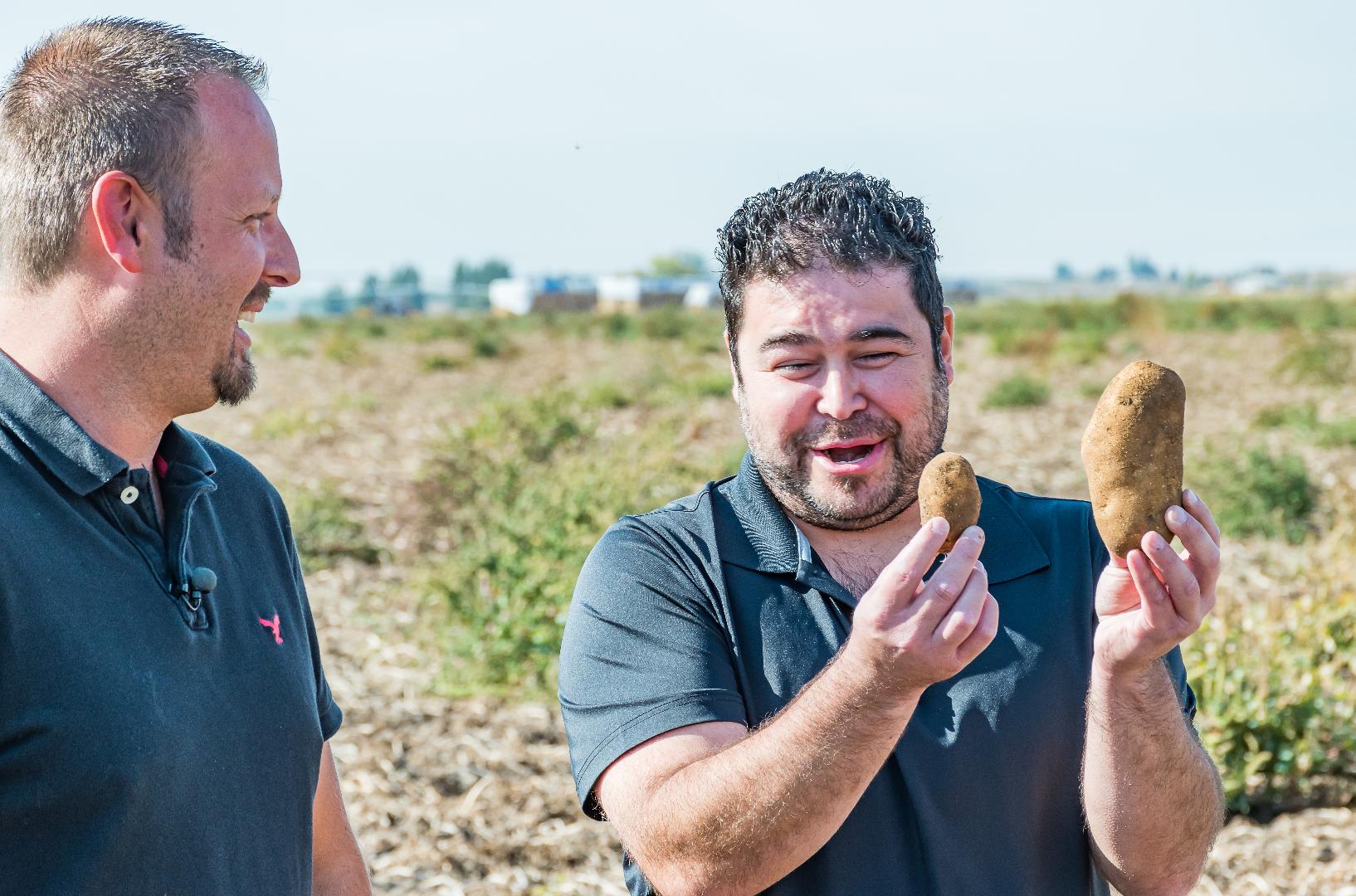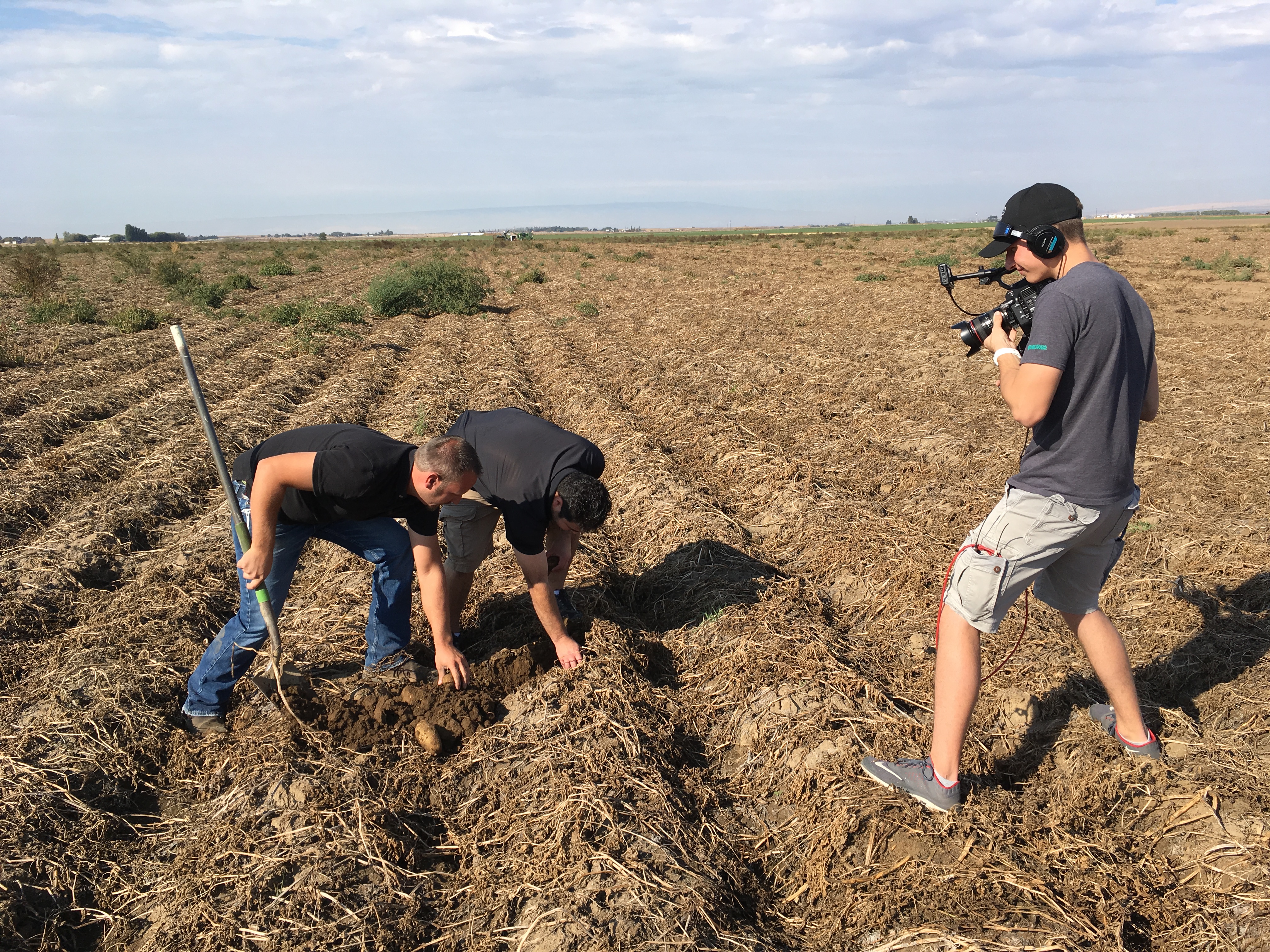This article appears as the cover feature in the January 2018 issue of Potato Grower.
Everyone has a story worth telling. The trick is getting people to listen.
A few years ago, the potato industry in Washington State met to discuss an issue that has been plaguing American agriculture for decades—telling the real ag story to the public. It’s a topic that rears its head at just about every industry meeting, but a concrete, boots-on-the-ground plan is rarely decided upon and implemented. This time, Washington’s potato people wanted to make something happen.
.jpg) “For 30 or 40 years, it’s kind of been the same thing,” says Chris Voigt, executive director of the Washington State Potato Commission (WSPC). “We ag people have never done a great job telling our story.”
“For 30 or 40 years, it’s kind of been the same thing,” says Chris Voigt, executive director of the Washington State Potato Commission (WSPC). “We ag people have never done a great job telling our story.”
What ultimately rose out of that fateful meeting was Washington Grown, a regional television show produced by the WSPC in tandem with several of the state’s other commodity groups. But there’s more to the story of telling ag’s story than that. Even once it was decided a TV show was the plan, it took some convincing to get people to pony up for the endeavor.
“Everybody was excited about it, but no one was used to spending money on this type of activity,” says Voigt.
Eventually, enough ag groups—led by the WSPC—contributed enough money to get to work on the process of producing the show, which, even now, Voigt admits “we never really thought was a possibility.” Next came the challenge of determining the show’s content. Voigt and others involved in the process realized early on that a show about farming would be watched almost exclusively by farmers—their favorite kind of people, but not exactly the target audience. Washington Grown quickly evolved into a foods show, showcasing how a particular Washington-grown commodity—from potatoes and apples to asparagus and blueberries—is used in one of the state’s many fine- dining establishments, then exploring where that food came from, its nutritional values, and even political issues involved in its production. An eclectic array of chefs, farmers, scientists, government officials and dietitians have appeared on Washington Grown, each providing another valuable layer to the ag story.
dining establishments, then exploring where that food came from, its nutritional values, and even political issues involved in its production. An eclectic array of chefs, farmers, scientists, government officials and dietitians have appeared on Washington Grown, each providing another valuable layer to the ag story.
The final hurdle was getting the show on the air.
“We had this idea, but what’s the point of making a TV show if it’s not going to run anywhere?” says Voigt. “So we started pitching it to TV stations.”
Washington Grown aired in the fall on Northwest Cable News for four 13-episode seasons from 2013 until the network shut down in 2016. The show was picked up for a fifth season in 2016 by KOMO, the CBS affiliate in Seattle, where it reaches 25,000 to 50,000 households each week. All five seasons of Washington Grown have also run on PBS stations across the state. Affiliate stations of ABC in Yakima, the Tri-Cities and Lewiston, Idaho, have also picked up the show year-round starting this winter.
“We’ve had very, very positive reviews from everybody,” says Voigt. “The quality is like something you’d see on network TV. Plus, it’s just plain fun. People love hearing about new restaurants in town, checking out home recipes, learning about farming.”
In fact, Washington Grown has proven good enough to garner some critical acclaim. It won a regional Emmy for an episode that discussed the benefits and production of genetically engineered sweet corn. Other episodes have shown the agriculture perspective of issues such as immigration, pesticide use and water sustainability.
“Some of the issues we cover are a bit fluffy,” Voigt says, “but some are the kind that catch headlines. We have a chance here to tell the true story of what it’s like to farm. The show has been a great vehicle to do that. Every producer I’ve talked to loves the show because it does that so well.”
 While Voigt isn’t necessarily present when the TV crew goes to restaurants and dietitians, he makes it a point to be there for the filming of every on-farm segment. He says growers have done much more than simply allow them to come to their farms; they have welcomed the project with open-armed enthusiasm. In fact, finding growers to feature has been one of the easiest processes of creating the program.
While Voigt isn’t necessarily present when the TV crew goes to restaurants and dietitians, he makes it a point to be there for the filming of every on-farm segment. He says growers have done much more than simply allow them to come to their farms; they have welcomed the project with open-armed enthusiasm. In fact, finding growers to feature has been one of the easiest processes of creating the program.
“We’ve done 65 episodes so far,” Voigt says. “I imagine around Episode 150, it might start getting difficult. We might run out of farmers at some point, but that’s still down the road quite a ways.”
The WSPC remains the primary backer of Washington Grown, and two of each season’s 13 episodes are typically dedicated to potato production. Voigt has been impressed with Washington potato growers’ foresight and willingness to support this dramatic form of public outreach. The bill for producing Washington Grown is not small, and Voigt knows channeling those funds to the show may put a squeeze on other vital parts of the industry, notably research. But he feels it’s worth it as consumers continue to grow more curious about where their food comes from.
“We have to raise the profile of ag communications,” he says. “We’ve gotten to the point where we have to simply make this part of our cost of doing business.
“Washington potato growers are in love with the program,” Voigt continues. “It’s given us an opportunity to tell the real farming story in a subtle yet compelling way.”